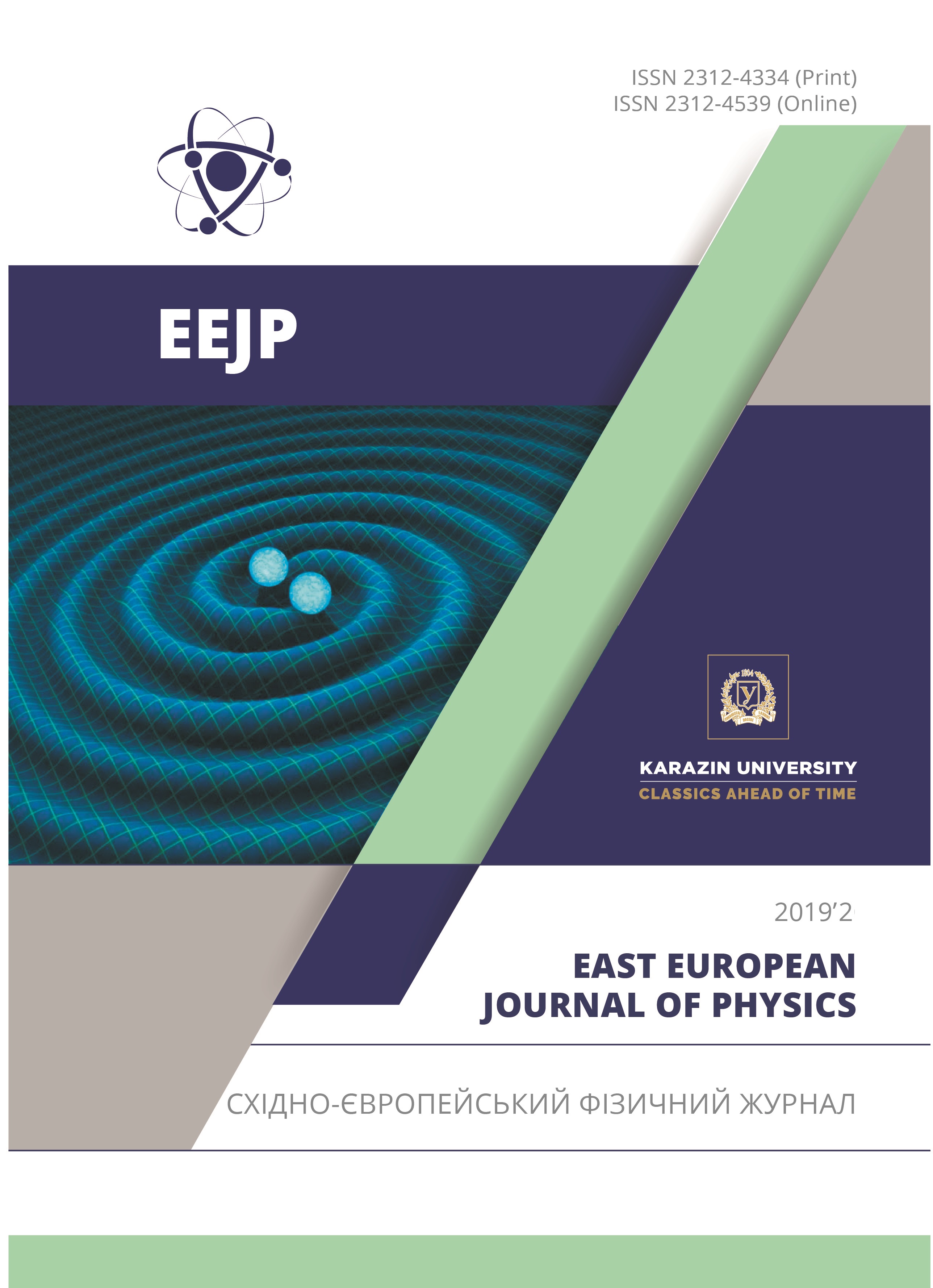Investigation of Silicon and Manganese Solubility in Cementite of Iron-Based Alloys
Abstract
In the paper we obtained the expression of cementite free energy and determined the solubility of manganese and silicon in Fe3C cementite depending on the temperature. Investigation was carried out for alloys with carbon content of 0.55-0.60 % (wt.), silicon content of 0.95-1.0 % (wt.), manganese content of 0.8-0.9% (wt.), the rest was iron. The smelting of Fe-Mn-Si-C system alloys was carried out in the alundum crucible furnace in argon atmosphere. The cooling rate of alloys after casting was 10 K/s. Microstructure analysis along with X-ray diffraction analysis was used to determine the structural state of the alloys. In addition, the physical characteristics of the alloys studied in this paper were determined, such as alloy chemical dependence of ultimate strength, extension and contraction ratio, impact toughness and hardness. The results obtained in this paper showed that the iron-based alloy with the content of carbon of 0.57 % (wt.), silicon of 0.97 % (wt.) and manganese of 0.85 % (wt.)) had the superior microstructure and physical properties. The microstructure of alloys studied in the paper is represented by pearlite, which makes up to 95 % of the volume. In the alloys we revealed the highly dispersed inclusions of Fe2.7Mn0.3C, Fe0.25Mn1.4C0.6 and Fe9SiC0.4 carbides, whose volume ratio was up to 1.5 %, the rest was ferrite. As it is known, the structural constituent of pearlite is cementite. The cementite has a significant effect on the physical properties of alloys. Application of quasi-chemical method enables to calculate the free energy of silicon and manganese doped with cementite and to determine the temperature dependence of silicon and manganese content in cementite. It is ascertained that there is a slight increase of carbon content in cementite (up to 28.79 % (atoms). Manganese can replace up to 12 % of iron atoms, and silicon can replace up to 4.5 % of iron atoms, depending on temperature. The calculated data obtained in this paper are in good agreement with those found experimentally by other authors.
Downloads
References
А.P. Huliaev, Металловедение [Metalsscience], (Moscow, Metallurgiya, 1986), p. 538. (in Russian)
Jae Hoon Jang, In Gee Kimand H.K.D.H. Bhadeshia, Materials Science Forum, 638-642, 3319-3324 (2010), https://doi.org/10.4028/www.scientific.net/MSF.638-642.3319
Bengt Hallstedt, Dejan Djurovic, Jörgvon Appen, Richard Dronskowski, Alexey Dick, Fritz Körmann, Tilmann Hickel and Jörg Neugebauer, CALPHAD: Computer Coupling of Phase Diagrams and Thermochemistry. 34(1), 129–133 (2010), https://doi.org/10.1016/j.calphad.2010.01.004.
I.G. Wood, L. Vočadlo, K.S. Knight, D.P. Dobson, W.G. Marshall, G.D. Price and J. Brodholt, J. Appl. Cryst. 37, 82-90 (2004), https://doi.org/10.1107/S0021889803024695
S.V. Tverdokhlebova, Vіsnyk Dnіpropetrovskogo nacіonalnogo unіversitetu. Serіja Fіzika. Radіoelektronіka, 14(12/1), 100 104 (2007).
O.V. Akymov and S.M. Nury, Eastern-European Journal of Enterprise Technologies, 6(11/78), 35 40 (2015).
Moshe Ron, Hanan Shechter and S. Niedzwiedz, Journal of Applied Physics. 39265-39285 (1968).
V.A. Kozheurov, Статистическая термодинамика [Statistical thermodynamics], (Moscow, Metallurgiya, 1975), p 75. (in Russian).
O.Yu. Beryoza, N.Yu. Filonenko and О.S. Baskevich, Physics and Chemistry of Solid State. 13(3), 968-973 (2012).
Citations
Justification for Choosing Alloying and Micro-Alloying Elements to Improve the Mechanical Properties of Railway Wheels
Babachenko A. I., Togobitskaya D. N., Kononenko A. A., Snigura I. R. & Kuksa O. V. (2020) Steel in Translation
Crossref
Authors who publish with this journal agree to the following terms:
- Authors retain copyright and grant the journal right of first publication with the work simultaneously licensed under a Creative Commons Attribution License that allows others to share the work with an acknowledgment of the work's authorship and initial publication in this journal.
- Authors are able to enter into separate, additional contractual arrangements for the non-exclusive distribution of the journal's published version of the work (e.g., post it to an institutional repository or publish it in a book), with an acknowledgment of its initial publication in this journal.
- Authors are permitted and encouraged to post their work online (e.g., in institutional repositories or on their website) prior to and during the submission process, as it can lead to productive exchanges, as well as earlier and greater citation of published work (See The Effect of Open Access).








